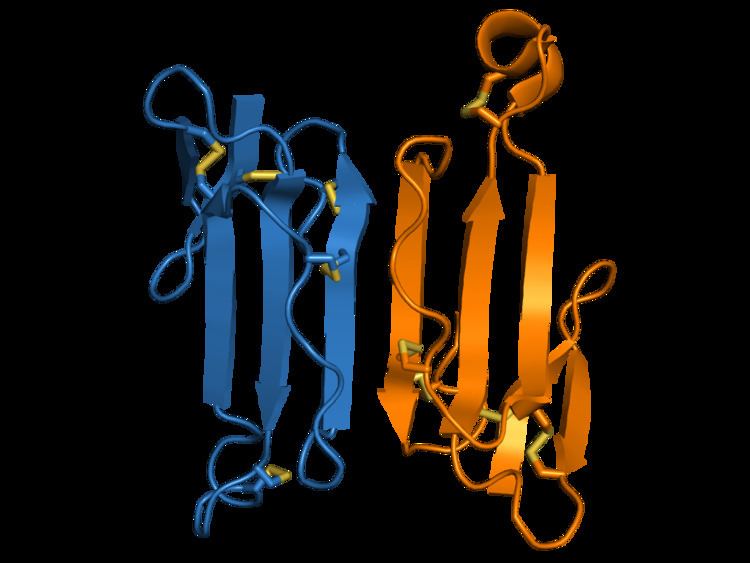Organism Bungarus multicinctus UniProt P01398 | Symbol N/A | |
 | ||
Kappa-bungarotoxin (often written κ-Bgt; historically also called toxin F) is a protein neurotoxin of the bungarotoxin family that is found in the venom of the many-banded krait, a snake found in Taiwan. Kappa-bungarotoxin is a high affinity antagonist of nicotinic acetylcholine receptors (nAChRs), particularly of CHRNA3; it causes a post-synaptic blockade of neurotransmission. Although there is significant variability in the clinical effects of snake bites, neuromuscular paralysis and respiratory failure are associated with krait bites.
Contents
Discovery
Kappa-bungarotoxin was first reported in 1983 as a component of the venom of Bungarus multicinctus that differed in biological effect from the previously known alpha-bungarotoxin: Kappa, but not alpha, was capable of impeding nicotinic signaling in the chick ciliary ganglion. The newly discovered toxin was designated "kappa" as an allusion to the Latin word kiliaris ("from the eye"), also the root of "ciliary". Separately identified toxins designated "toxin F" and "bungarotoxin 3.1" were identified by protein sequencing as identical to kappa-bungarotoxin.
Mechanism and biological effects
Kappa-bungarotoxin binds to the nicotinic acetylcholine receptors of the skeletal muscles, predominantly to the nicotinic receptor subunit alpha 3 (CHRNA3) and to a lesser extent alpha 4. Two distinct binding surfaces, both on the N-terminal extracellular face of the receptor subunit, have been identified.
Kappa-bungarotoxin is a receptor antagonist, meaning it blocks the normal response of the receptor to acetylcholine, which inhibits neurotransmission and therefore causes neuromuscular paralysis. Like the alpha-bungarotoxins, kappa-bungarotoxin causes a post-synaptic blockade of signaling; this is in contrast to the beta-bungarotoxins which induce a pre-synaptic block. The distinction between the effects of alpha and kappa was first identified functionally, as differences in effects on specific neural structures. The basis of this functional difference has been molecularly characterized as differences in receptor subtype specificity; the pentameric receptors are assembled from different distributions of subunits in neurons and in muscles.
Structure
The kappa-bungarotoxin polypeptide is 66 amino acids long and folds into an antiparallel beta sheet structure stabilized by five conserved disulfide bonds, a structural feature shared by many peptide toxins. Unlike other members of the bungarotoxin family, kappa is a dimer.
